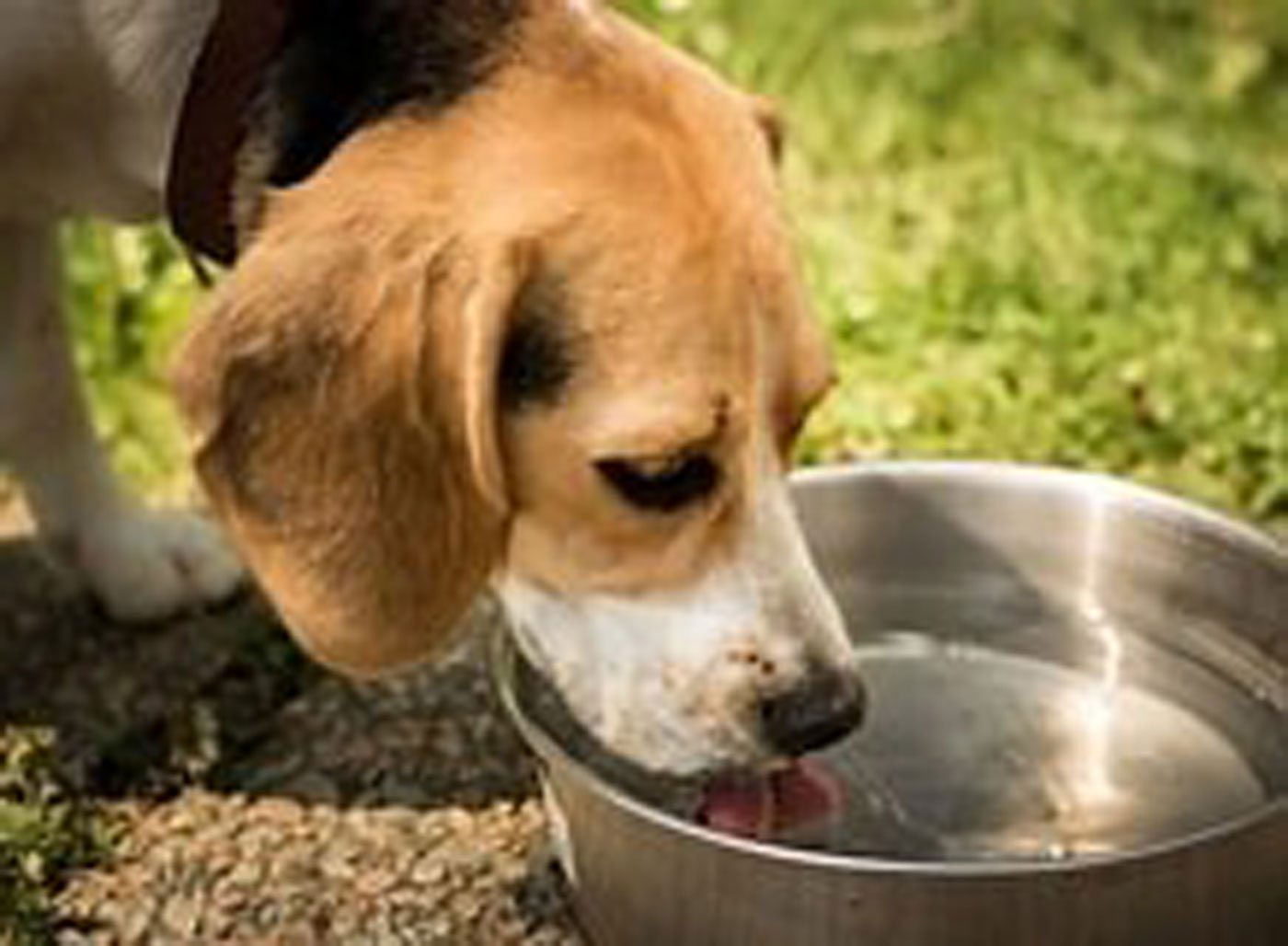As with humans, around 80% of a dog’s body is water.As “Dogtime” states “Water is essential to help dissolve and carry substances throughout your dog’s body. It’s also the basis for most processes and chemical reactions that keep him healthy. Digestion, circulation, waste filtering and body temperature regulation are just a few of the internal processes driven by water. If your dog is dehydrated, he can suffer kidney and heart damage, as well as other problems.
Always ensure your dog has access to sufficient clean drinking water. A dog will need to drink about an ounce of water for every pound of weight daily, but may need more if he has exercised, the weather is warm, or he is taking medication that may dehydrate him.” To measure how much water your dog is drinking daily, keep a record of how much water you are giving him and then deduct how much water is left in his bowl at the end of the day. It is prudent to keep a record of water consumption over a number of days as consumption may vary with temperature, health of your dog and amount of exercise. Be aware of any water your dog may drink outside of the home as this will affect how much he has consumed during the day.
The bowl used to drink out of is also important to maintain your dog’s health. Some plastic bowls can become scratched, resulting in the protective coat being compromised, allowing bacteria to form on the rim or sides of the bowl. Whether you buy a water or food bowl made of plastic, stainless steel, ceramic, silicone, or other material, check for any certifications or warnings on labels. Inspect bowls frequently for cracks or chips that can allow bacteria growth. Whatever type of bowl is used, ensure that it is cleaned thoroughly each day. Don’t buy a water bowl that is too big for your dog. He may only be able to drink water part way down. A properly sized bowl is essential. Tall, narrow bowls are good for dogs with long ears like Bassets and Spaniels. Keeping their ears out of the water can help prevent infections. If you leave your dog a bucket of water, be sure he can still drink when it gets low. Small dogs may fall into the bucket trying to get at the water. Don’t forget: the toilet bowl is not a water dish! Despite the joy some dogs take in using it as one, bacteria and deadly chemicals used to clean the toilet are just two of the dangers your dog faces if you let him do it. Put the lid down!
So, what are the signs that your dog is dehydrated? A dehydrated dog will exhibit symptoms such as loss of skin elasticity, loss of appetite, vomiting with or without diarrhea, lethargy, panting, dry nose or sticky gums and should be taken to your vet’s clinic for a check up. If he is dehydrated, the vet can hook him up to an IV to quickly rehydrate him and also check him over to find the source of the problem.
It is natural to think about fluid intake more during the warmer weather but hydration, as with food intake, is an ongoing necessity. Clean water is a vital part of a dog’s life: please treat it as such.





